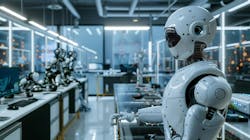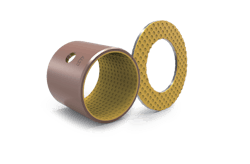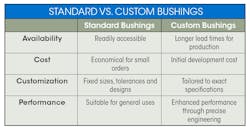Humanoid robots are designed to replicate human movement, which demands a high level of accuracy and precision. Without said performance, the robot’s potential for further advancements is limited. This is where bushings come into play. Their specifications—especially tolerance and wear rate—are key to enhancing movement precision.
Types of Bushings
Bushings are components designed to minimize friction between moving parts, enabling smoother operation within mechanical systems. Below is a comparison of the three most common bushing types:
Advantages of Using Bushings in Humanoid Robots
Incorporating bushings into humanoid robots offers several significant benefits, including reduced friction between moving parts—essential for smooth operation. When properly selected, bushings enhance durability by minimizing wear, which extends the lifespan of components. Additionally, custom-designed bushings can be tailored with tighter tolerances to improve movement precision. They also act as dampeners, leading to quieter operations—an important feature for robots that engage socially with humans.
Material Selection for Bushings
Choosing the right material for bushings is essential as it greatly affects performance across different environments. Trusted manufacturers offer a wide range of bushing materials. Here, we focus on a sampling developed by CCTY, a designer and manufacturer of precision motion control products and assemblies:
Steel/PTFE (TSA). The backing is made from low carbon steel and features a sintered porous bronze combined with an impregnated PTFE composite polymer. This design offers exceptional wear resistance and low friction performance across a wide range of loads, speeds and temperatures in dry running conditions, and is also suitable for lubricated applications.
Steel/POM (PSA). This material features a steel backing with sintered bronze and POM (polyoxymethylene) impregnation, ensuring minimal maintenance. Standard components include grease indents in the sliding layer, making them suitable for both grease and oil lubricated applications.
Bronze (MCA). Bronze strip contains dimples for lubrication. It offers good wear resistance and is suitable for lubricated applications.
Steel/bronze (MBA). Bimetal bearing with steel backing. Bearing material contains lead, good resistance to fatigue. Suitable for oscillating motion with high loads.
At CCTY, each material is developed in-house to meet specific application requirements.
Standard vs. Custom Bushings
Custom bushings can be manufactured to tighter tolerances and/or sized after installation. This tighter tolerance will allow the system to have a smaller clearance between the bushing and the shaft. Custom bushings also allow for significantly longer lifespan compared to off-the-shelf products. These benefits are particularly advantageous for humanoid robots, where reduced maintenance is highly valuable.
READ MORE: Humanoid Robots: Enhancing Accuracy with Custom Crossed Roller Bearings
Assembly Considerations
When assembling a bushing into a robotic system, several key factors should be considered. For starters, ask a bearing expert for their recommendations. These include housing ID (inner diameter) tolerance, fit between the bushing OD (outside diameter) and housing ID, fit between the bushing ID and shaft OD, shaft surface roughness, shaft hardness, alignment, lubrication method, and more. A precise fit is crucial to avoid excessive clearance if the press fit is too small or housing deformation if the press fit is too large. Proper attention to these factors helps ensure optimal performance and longevity of the system.
Collaborating with a Bearing Manufacturer
Working with a bearing manufacturer can bring numerous advantages:
Design support for custom solutions. Robotic engineers can collaborate directly with manufacturers to create bushings or entire linkage assemblies that meet their specific needs.
Access to testing and validation resources. Manufacturers often possess the facilities necessary for thorough testing, ensuring bushings perform as intended in real-world conditions.
READ MORE: Linear Bearings and Actuators for Applications
A Tip for Robotics Engineers
Custom bushings are vital for enhancing the performance of humanoid robots. They facilitate precise movements and reduce wear, which is crucial for advancing robotic capabilities. I encourage robotic engineers to explore partnerships with bearing manufacturers to harness the benefits of custom bushings, ultimately leading to more advanced and capable humanoid robots.
About the Author

Yaman Obaid
Mechanical Engineer, CCTY
Yaman Obaid is a mechanical engineer specializing in robotics for CCTY, a global manufacturer of precision motion control products with offices in China, North America, Europe, Japan and India. Click here for more information.




